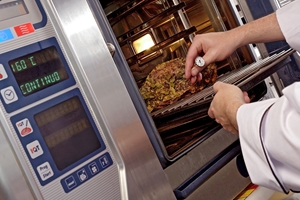Australia’s vibrant and fast-growing food industry is one of the most critical in the country, employing hundreds of thousands of people and generating billions for the local economy.
As a member of this sector, it’s important that you take the time to understand your legal and ethical obligations when it comes to preparing, serving or transporting potentially hazardous food.
When consumers purchase food products – be it directly from a supplier, from a commercial retailer, or from a restaurant or cafe – they need to have assurance that the goods they are buying are safe and ready for human consumption.
Without this assurance, the entire relationship breaks down and the success of your organisation can be compromised. For that reason, it’s important that you take the time to read up on food safety legislation and best practice to avoid any unfortunate incidents.
Standard 3.2.2
Standard 3.2.2 of the Australia New Zealand Food Standards Code (Food Safety Practices and General Requirements) outlines the mandatory requirements that all Australian food businesses must comply with when it comes to receiving, storing, processing, handling and transporting food.
A limited number of food organisations are exempt from these requirements – certain charities and community groups, for example. However, for the most part, any party that sells or handles food in any way is legally required to adhere to the practices outlined in this standard.
Perhaps the most important ruling in standard 3.2.2 that food organisations need be aware of is regarding potentially hazardous foods, and the safe temperature levels at which these goods must be stored.
Potentially hazardous foods
The Australia New Zealand Food Authority (ANZFA) defines “potentially hazardous foods” as foods that “might contain the types of food-poisoning bacteria that need to multiply to large numbers to cause food poisoning” and “will allow the food-poisoning bacteria to multiply” if stored or prepared in certain conditions.
Many of the most popular food items fall under this definition, including meats (both raw and cooked), dairy products, seafood, processed fruits and vegetables, cooked eggs and beans, and cooked rice and pasta.
Any food classified as potentially hazardous must meet a number of strict regulations that are designed to ensure the good remains safe for consumption.
Safe temperature levels
Under Standard 3.2.2, any organisation responsible for potentially hazardous food must ensure that the food is stored at a temperature either below 5 degrees Celcius or above 60 degrees Celcius.
It’s important to keep in mind that the definition of ‘store’ doesn’t only include the transportation or long-term containment of food. A hazardous food product being kept in a container on a benchtop also counts as being in storage, and therefore must be kept at a safe temperature.
ANZFA notes that it would be impractical to keep foods at this temperature during the actual preparation phase. However, it does stress that food should only be kept at room temperature (between 5 and 60 degrees) when absolutely necessary, and that preparation time should be minimised as much as possible.
Measuring food temperatures
In order to ensure hazardous foods are kept at safe temperatures, food organisations will need specialised tools, the exact nature of which depends on where they sit on the overall supply chain.
At the very least, organisations will need to ensure they have access to a reliable and accurate probe thermometer that is capable of measuring the internal temperature of food. Because food can often reach a different internal temperature, taking a straight surface reading may not always be accurate enough.
Some food organisations may also make use of specialised data loggers, which can be used to measure and record the temperature of a room in which food is being stored. These records can be checked to ensure temperatures never reached unsafe levels.
For more information about measuring and recording food temperatures, contact the experts at Testo today.









 Reduce cooking oil costs while ensuring quality
Reduce cooking oil costs while ensuring quality Expert knowledge on CO2 monitoring
Expert knowledge on CO2 monitoring Refrigeration knowledge - in 3 modules
Refrigeration knowledge - in 3 modules



